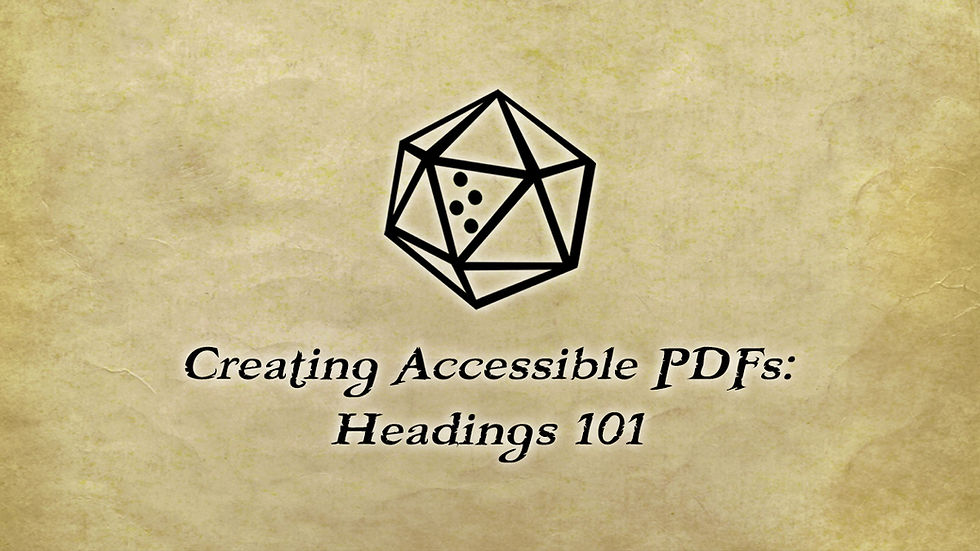Creating Accessible PDFs: Alt Text 101
- DOTS RPG Project

- Sep 28, 2020
- 3 min read
Updated: Jan 16, 2021
Greetings, Adventurer! The DOTS Guild welcomes you once more on your journey to learn, and we are happy to be of service. This missive provides information on how to make your illustrations accessible to those who read not with their eyes, but their machines. Should you have any further questions, please contact our Guild Leaders for assistance!
This document gives you an overview on image descriptions in digital files, also known as alt text, and how to use them. Adding alt text allows you to create descriptions of said images, which can then be read by a screen reader (SR), and giving SR users information about the contents of an otherwise inaccessible image. Alt text should be used any time there’s an image, and this introduction will explain the basics.
To start, what exactly is alt text?
Alt text, short for ‘alternative text’, is an HTML attribute. This is used to specify some text which should be shown when the original element the text is applied to cannot be rendered, most commonly for images. If a picture on a website can’t load, it will display the alt text instead.
When alt text is not applied an SR user cannot interact with the image. Depending on the document or program used, they may hear ‘image’ or ‘graphic’ declared, but when the alt text field isn’t filled in, there’s nothing else to read. Important images are left with no information about them. For many different documents, things like informational graphics and highly detailed artwork are important to what the writer wants to share with their readers. Not including alt text for an SR user is the equivalent of not including any images at all.
Most word processors will have an option for applying alt text to any images you insert, and a web search of ‘[Word Processor] add alt text’ will bring up guides on how to use this function for your specific program. Some programs may label it as an image description instead of alt text, but it should serve the same function. Any image you include in your document should have alt text attached, even if it is simply a decorative line break. Some programs will allow you to mark a graphic as decorative, which should be used with care. If the design of this decorative graphic is something you would want conveyed to the reader, you may want to describe it instead.
Your alt text should be a clear, concise, and objective description of the image. Text included in the image should be transcribed in full. For symbols or detailed artwork, focus on the important elements of the image and try to keep it short while getting as much relevant detail as possible. For image descriptions our Limners write, we have two versions; a short 150 character description and a long 700 character description. Depending on our project, some may use one over the other or even both in different settings. You can make the decision on what’s right for you and your project, but we recommend keeping it consistent across the document. A web search of ‘alt text best practices’ will bring up a wealth of information for you to explore at your leisure. Be careful not to include information not present in the image – such as stories about what might have happened before or after the image, and avoid second person speech, like “you see X standing before you.” Alt text can and should be descriptive, especially when putting alt text in a TTRPG context, but your aim is to give an equivalent version of the image in words.
As previously mentioned in the Headings 101 document, you’ll want to check your software’s export settings for an ‘export tagged document’ option you can check in order to preserve the alt text. When exporting your document, make sure you don’t export it where each page is a flattened image (rasterized), as this will destroy the added alt text and tagging structure.
If you have any questions or would like to get in touch, please contact us.








Comments